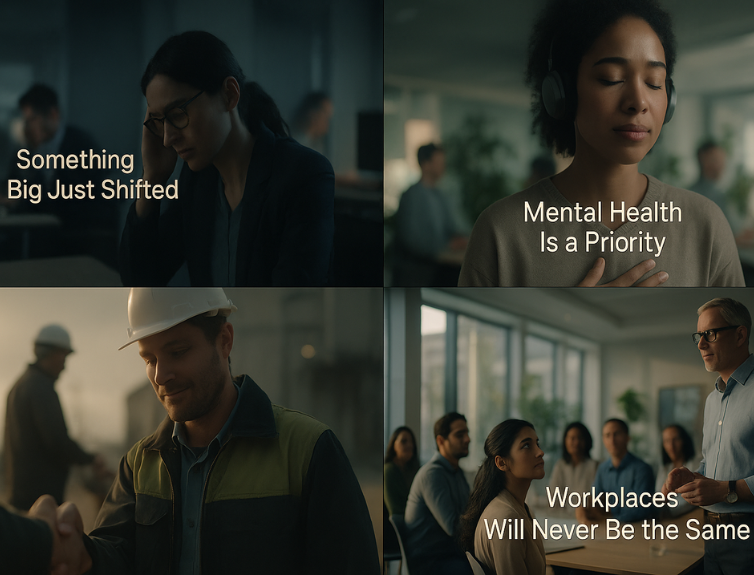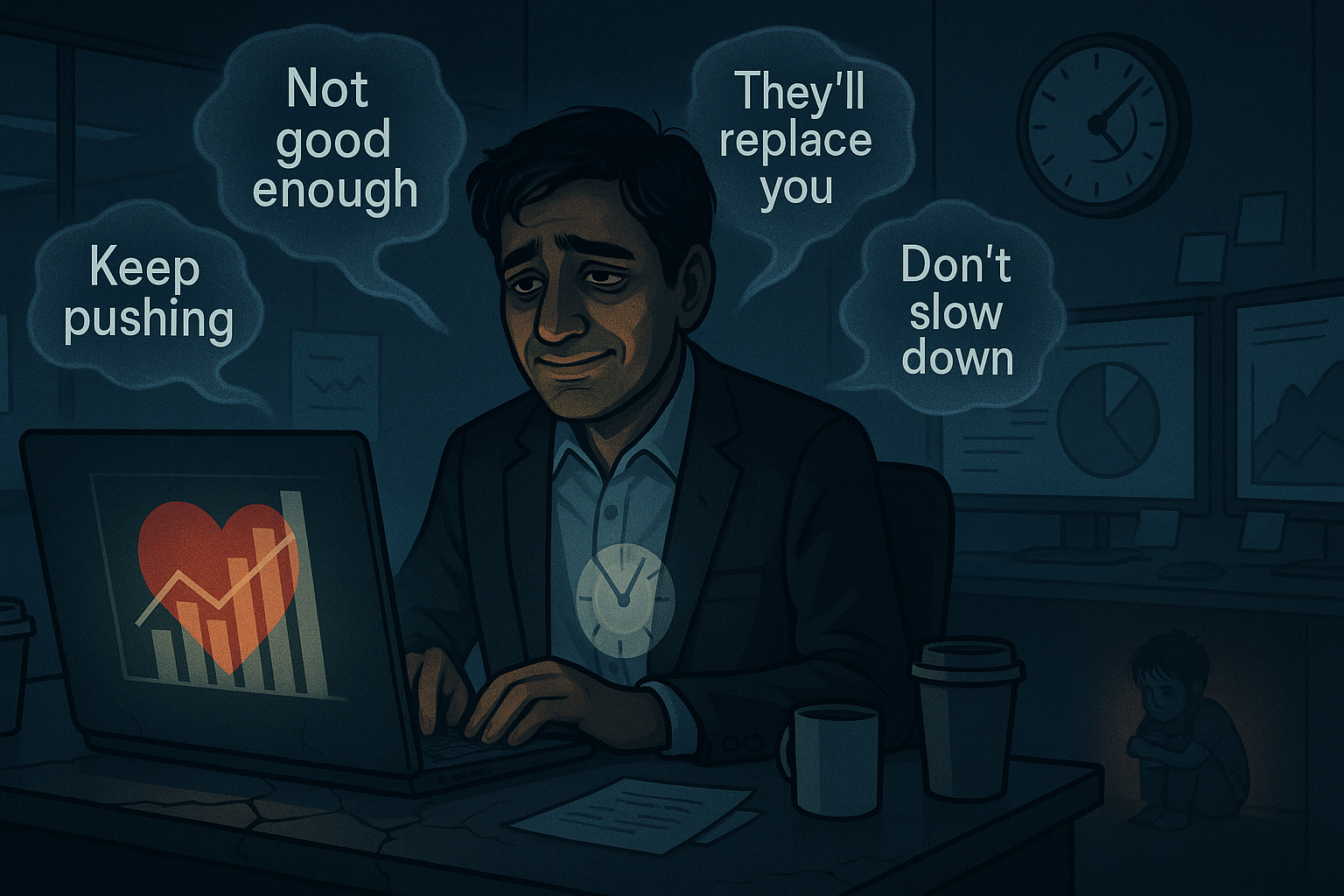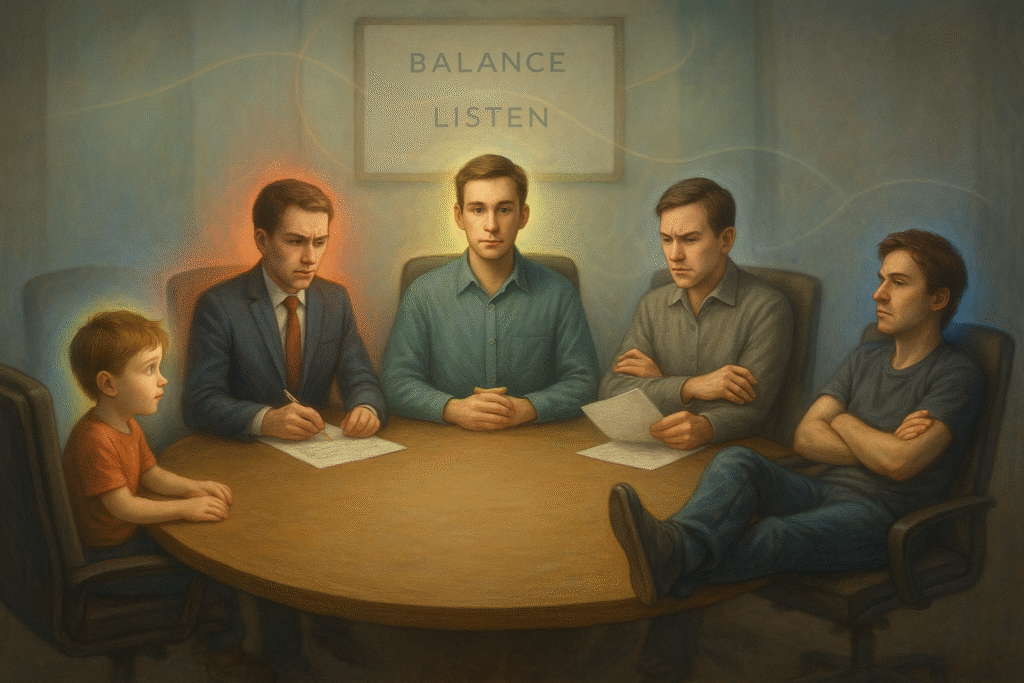
Something Big Just Shifted: WHO’s 2025 Priority Is Your Mental Health at Work
The World Health Organization (WHO) has made it official:
The global mental health agenda for 2025 is laser-focused on the workplace.
Finally, the place we spend over 90,000 hours of our lives is getting the emotional attention it desperately needs.
But if you think this is just about adding meditation apps or wellness webinars to your office Slack, you’re missing the real issue.
What if your real stress at work isn’t just about deadlines or bad bosses—but about your own emotional history?
Let’s talk about something no HR guidebook is really addressing:
Why Childhood Beliefs Don’t Stay in Childhood
We all carry early emotional experiences—moments where we felt unseen, unworthy, unsafe, or unheard.
You might think you’ve outgrown them. But here’s the catch: your subconscious doesn’t work by age. It works by emotional imprints.
And under pressure—like, say, in a performance review or tight deadline—those old parts wake up.
Suddenly, you’re not just annoyed at your manager—you feel rejected like that 7-year-old who didn’t get picked in class.
Or you overcommit because your nervous system still thinks you need to prove your worth to be loved.
That’s not “overreacting.” That’s unfinished emotional business showing up in adult spaces.
The “Burnout Achiever” Trap
Now let’s layer that inner pressure onto corporate hustle culture.
The obsession with output. The silent suffering. The smiling-through-burnout syndrome.
It’s all disguised as ambition, but in truth?
It’s a trauma loop.
I call this the Burnout Achiever mindset—where you’re always chasing the next goal, fueled not by inspiration, but by fear:

- Fear of being replaced
- Fear of not being “good enough”
- Fear of slowing down
This mindset rewards exhaustion. It praises emotional suppression. It turns your worth into a KPI.
And here’s the punchline: It doesn’t lead to real fulfillment—only emotional bankruptcy.
The Alternative: Becoming a Swasthya Yogi
Now let me flip this.
What if your work life could feel like an aligned, sustainable practice instead of a daily pressure test?
That’s what I call the Swasthya Yogi approach—someone who:
- Balances their nervous system like a daily ritual
- Listens to their body during work decisions
- Creates from clarity, not compensation
- Knows when to rest without guilt
This isn’t about laziness. It’s about emotional hygiene and real productivity without emotional debt.
And it’s 100% learnable.
So… How Do You Get There?
You don’t need to quit your job and meditate in the mountains.
What you do need is emotional awareness—and the right tools to regulate what’s coming up.
Here are a few NLP-based tools we use in our programs at www.ashishnagarnlp.com:
The “Trigger to Truth” Technique
How it works:
Whenever you feel emotionally hijacked at work—snapped at, blamed, ignored—pause.
Ask yourself:
- What does this remind me of?
- Who does this feel like (from my past)?
- What belief just got activated?
Often, it’s something like:
“I’m not good enough.”
“I’ll get in trouble if I speak up.”
“No one supports me.”
Now, breathe. Acknowledge the emotion. Speak kindly to the younger version of you that still believes this.
This is subconscious regulation in real time.

Real Transformations, Real Results

Inner Boardroom” Integration

How it works:
You imagine all the emotional “parts” of you—inner child, high achiever, perfectionist, rebel—sitting at a table together.
Then, ask:
- Who’s running today’s meeting?
- Who needs to be heard, not suppressed?
- What does each part want from work?
This technique, borrowed from parts integration in NLP and IFS (Internal Family Systems), creates emotional balance.
No more extreme overworking or collapsing.
Belief Upgrade Journal
Every time you feel stuck, exhausted, or resentful—pause and write:
- What’s the belief underneath this emotion?
- Where did I first learn it?
- Is this belief serving my adult self?
- What truth can I offer instead?
For example:
“I have to say yes to everything or I’ll be seen as weak.”
“Actually, I have a right to set boundaries without being less valuable.”
Over time, this rewires your workplace identity—from fear-driven to self-aligned.
Why Your Office Feels Like a Battlefield (Hint: It’s Not Just the Culture)
Workplaces can feel toxic.
But toxicity doesn’t always come from the environment. Sometimes, it comes from collective emotional armor.
Think about it:
- Everyone’s walking around with unhealed stories
- Feedback feels like a threat
- Communication feels cold
- Vulnerability is mocked, not modeled
Healing this doesn’t start with policies. It starts with individuals regulating their beliefs and behaviors—especially those in leadership.
Need Physiotherapy Help? Reach Out to Us
Real Change Begins from the Inside Out
If the WHO is calling out workplace mental health in 2025, we can’t afford to just tweak benefits and toss in a few meditation apps.
We need:
- Subconscious healing spaces
- Managers trained in emotional safety
- Employees aware of their emotional patterns
- Cultures that praise presence, not panic
At ashishnagarnlp.com, this is the work we do daily—helping high-functioning professionals stop running from their inner child and start working with it.
Because your work isn’t just a job. It’s where your patterns get triggered and your healing can begin—if you’re willing to notice.
Final Reflection: What Would Your Inner Child Say About Your Job? Would they say:
“You work too hard for love.”
“You never feel safe to rest.”
“You still think being perfect keeps you safe.”
If so… it’s not just burnout. It’s a belief system begging to be seen.
Let’s not wait for mental health to become a crisis.
Let’s heal before the hustle burns us out.
What to Do Next:
- Explore the Swasthya Yogi Mindset inside our Self-Healing Cascade
- Join our Inner Child Healing for Working Professionals coaching series
- Start your belief journal today using our free guide
- Share this with someone silently struggling at work
